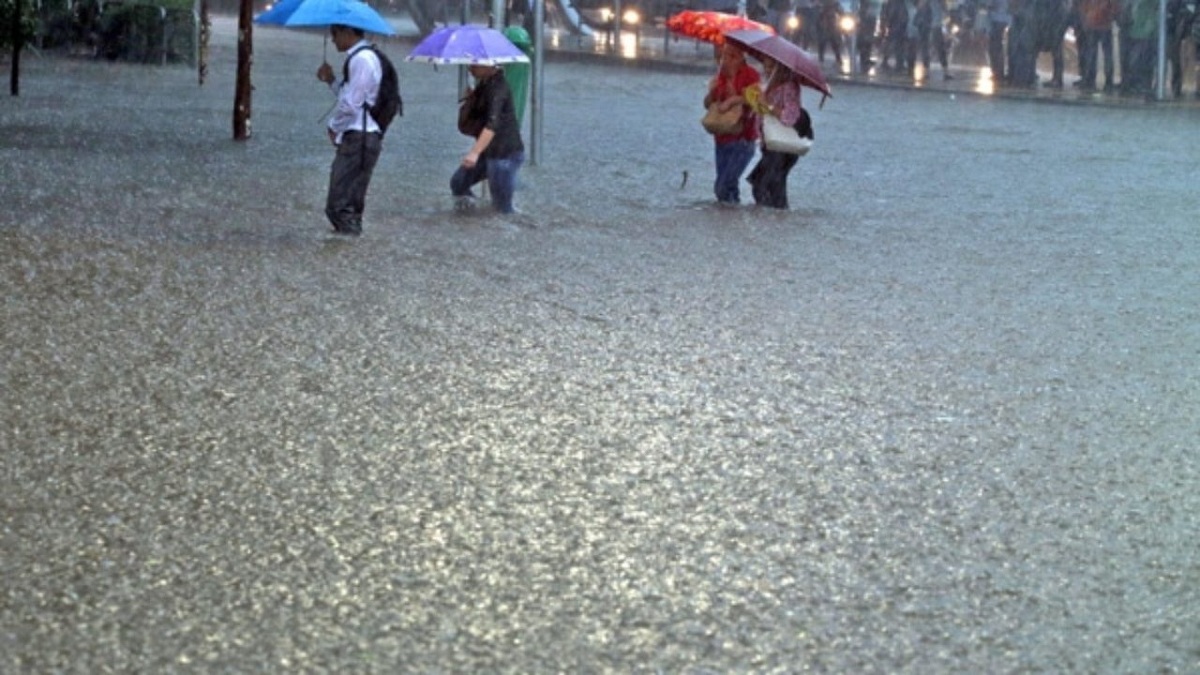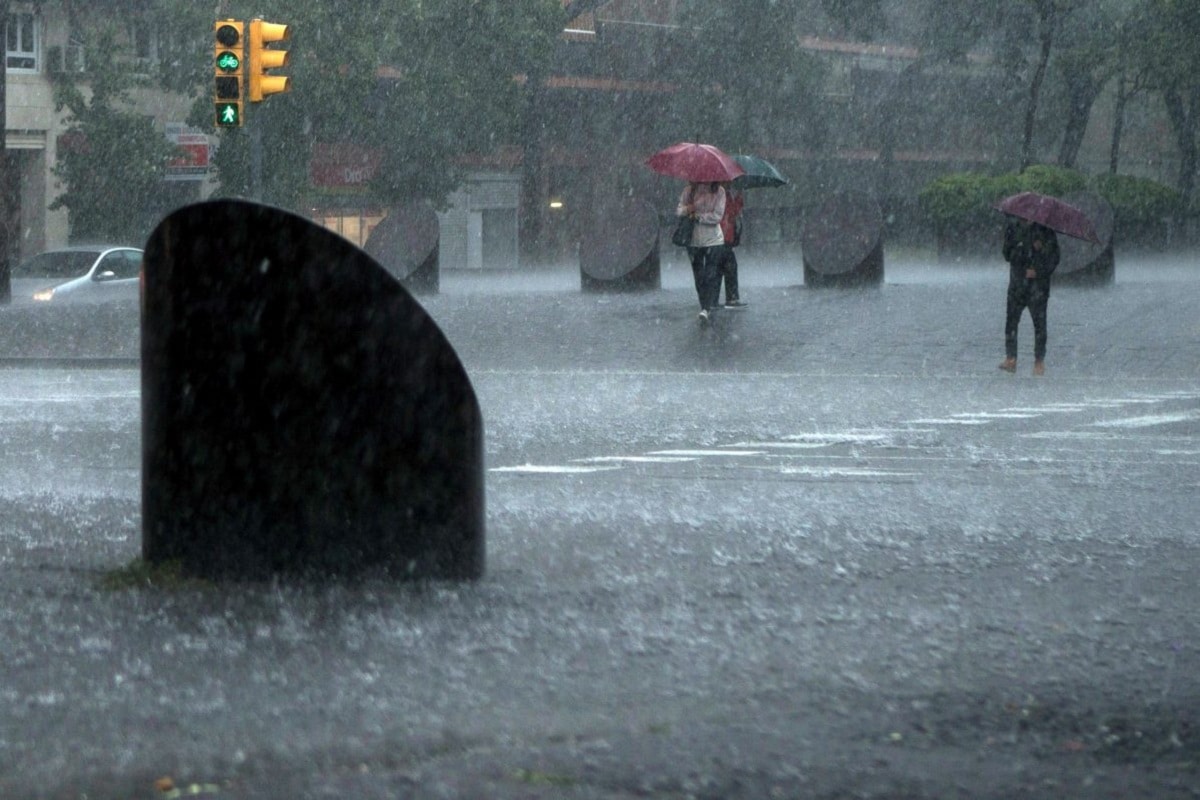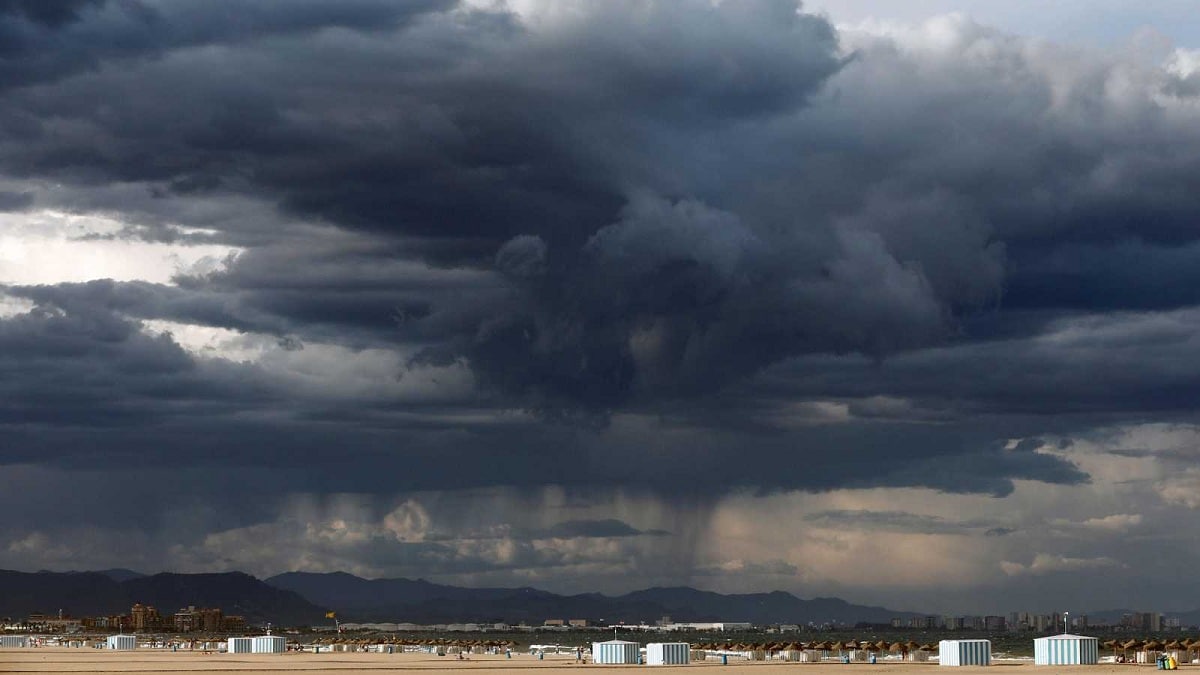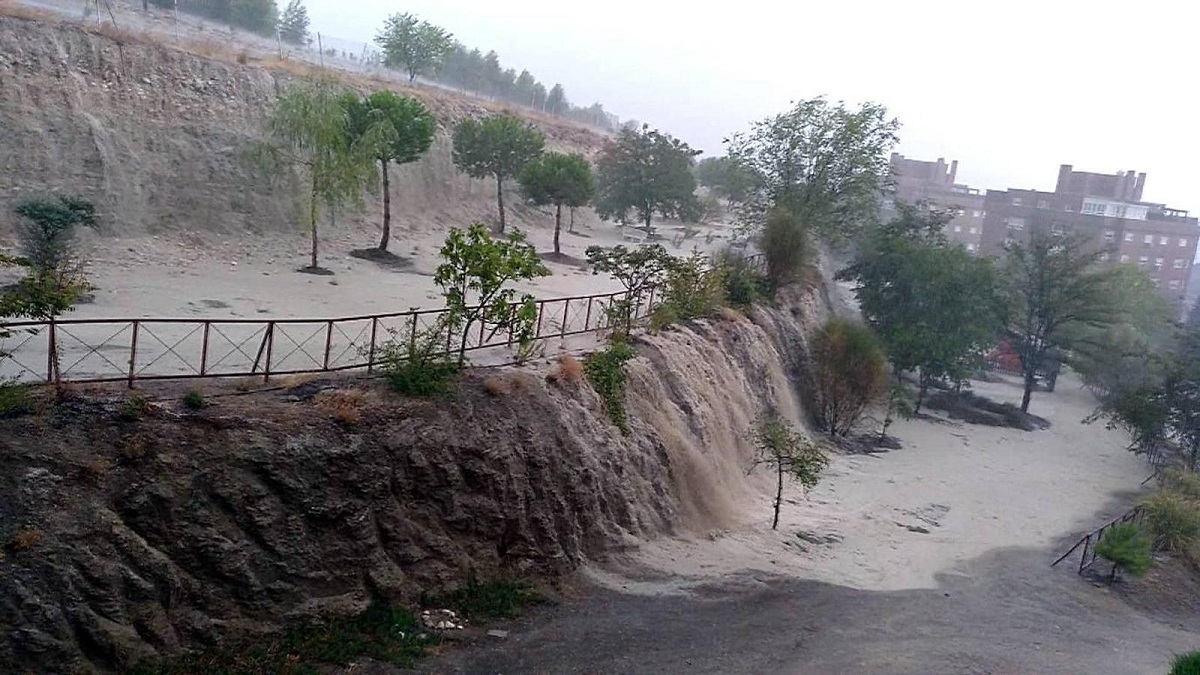
As we know, rain is a very common meteorological phenomenon on our planet. It is nothing more than the fall of water particles in liquid form, the product of condensation and the cooling of water vapor in the clouds at the top of the troposphere. Sometimes we name the rains by the name of precipitation, although this refers to a much broader category. The generation of rainfall depends on several factors: temperature, atmospheric pressure and humidity. The Torrential rains are those that occur with great intensity and for a short time. There are many questions about this type of rain and how it can originate.
Therefore, we are going to dedicate this article to tell you everything you need to know about torrential rains, their characteristics and how they form.
Origin of the rain

In order to know the characteristics and origin of torrential rains, we must understand how the rain originates. Rain is nothing more than a part of the hydrological cycle in which the drops of water precipitate and have previously been made from the ocean, rivers, lakes and the land surface where there is water.
The rain forms between the various types of clouds such as cumuloninbus and nimbostratus. These are the clouds that receive the vast majority of moisture from the atmosphere. When the water vapor rises and reaches heights, they are usually colder regions. This causes the steam to condense and water droplets are formed thanks to hygroscopic condensation nuclei. These condensation nuclei can be specks of dust or suspended particles found in the atmosphere. When they condense they reach a weight through which they end up precipitating by the action of gravity.
The formation of rain can occur in 3 ways:
- Convection showers: are those types of rain in which hot air comes into contact with the earth's surface and is heated by the action of the sun. Once it rises from the air, it cools and rains occur due to the condensation of the water droplets.
- Orographic rains: are those that are formed when a mass of humid air collides with a mountainous relief. This air tends to rise up the slope and discharges all its moisture until it descends completely dry to the other side of the mountain.
- Frontal showers: They are generated by the collision of two humid air masses with different temperatures. Usually it is usually one quality and the other cold. These rains are usually stormy or hurricane type.
- Torrential rains: they are formed by the contrast of temperatures with the earth's surface. It usually takes place at the end of summer and they are storms with great intensity that usually cause serious damage, especially in agriculture.
Formation of torrential rains

Many people wonder why torrential rains form in late summer. It is normal that in the last days of August there are storms in a good part of our country. And is that the origin of these torrential rains is due to instability. Instability is normally concentrated in the southeast of the peninsula with very abundant rainfall that exceeds 200 mm.
These episodes of torrential rains are often known colloquially as a cold drop. It is lonely practically almost every year in the surroundings of the Mediterranean Sea and at this time. They usually vary between the last days of August and the first weeks of October. Normally the month of September is the most likely for their formation. All these severe storms that occur regularly on the same date do not correspond to a coincidence, but to certain meteorological factors.
The main reason for the origin of torrential rains is the contrast in temperatures. One of the main reasons is that the high temperature of the Mediterranean Sea at the end of summer contrasts with the dates of the land surface of the peninsula. At the end of the summer the temperature of the Mediterranean Sea is around 27 degrees, although there are some records of temperature that have reached 31 degrees.
On the other hand, we must bear in mind that summer is the time with the greatest atmospheric stability in our country. The visit of a storm in the summer months is not something very common. However, at the end of this time the storms of the northern hemisphere begin to wake up and come during the month of September.
DANA causes torrential rains to form

When we refer to DANA it means isolated depression at high levels. This is equivalent to what we commonly call a cold air pocket at height. When this depression in height contains very cold air at high levels of the atmosphere but without contribution of cold air on the surface, It is located in the immediate vicinity of the Mediterranean Sea. Since we have quite high temperatures here, it is during these dates, we have a great difference in temperatures between the different layers of the atmosphere.
This temperature difference marks an atmospheric instability in which we see that the air masses rise with great ease, quickly become saturated with water vapor when encountering colder air and give rise to strong storms. As we know, when the hot air rises towards the upper part of the atmosphere we find a rapid condensation of the water droplets. If this condensation occurs at high speed, the storm will be much more violent.
In addition to what we have mentioned, if this depression in height is achieved located in the right place and it reaches a contribution of wind from this component, if we add to what is responsible for a large amount of humidity from the Mediterranean Sea, we can have as An exceptional situation of torrential rains resulted. They are rains that can exceed 300 mm. There is a record that was set in 1987 in the region of La Safor with rainfall of 500 mm caused by torrential rains.
I hope that with this information you can learn more about torrential rains.